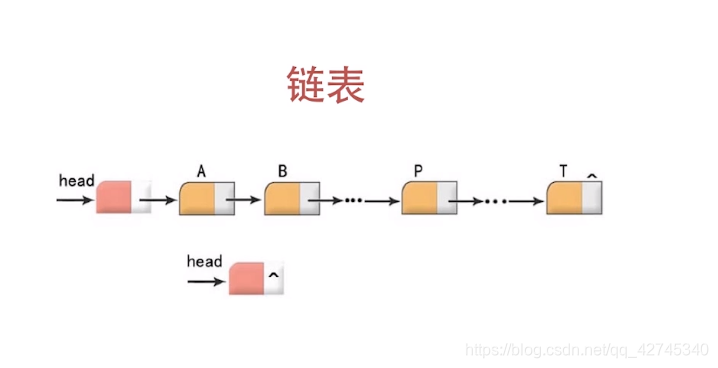5-1 Linux C 动态数据结构–静态链表

链表里的各个地址不一定是连续的;
静态链表的定义、初始化以及遍历:
#include <stdio.h>
struct weapon{
int price;
int atk;
struct weapon *next;
};
int main(){
struct weapon a,b,c,*head;
a.price = 100;
a.atk = 150;
b.price = 200;
b.atk = 250;
c.price = 300;
c.atk =350;
head = &a;
a.next = &b;
b.next = &c;
c.next = NULL;
struct weapon *p;
p = head;
while(p != NULL){
printf("%d,%d\n",p->price,p->atk);
p=p->next;
}
return 0;
}
输出结果:
linux@ubuntu:~/workspace2/les4$ ./a.out
100,150
200,250
300,350
静态链表的所有节点都是在程序中定义的,而不是临时开辟的;
5-2 Linux C 动态数据结构–动态链表
在程序执行的过程中,从无到有的建立起一个链表;
动态链表的定义、初始化以及访问:
linux@ubuntu:~/workspace2/les4$ cat link2.c
#include <stdio.h>
#include <malloc.h>
struct weapon{
int price;
int atk;
struct weapon *next;
};
struct weapon *creat(){
struct weapon *head;//head是链表的头指针
struct weapon *p1 , *p2;//p1指向链表当前新创建的节点,p2指向上一个节点
int n = 0; //n表示当前链表的节点个数
p1=p2=(struct weapon*)malloc(sizeof(struct weapon));//malloc分配内存块的函数
scanf("%d,%d",&p1->price,&p1->atk);
head =NULL;
while(p1->price!=0){//输入结束的约定
n++;
if(n==1) head=p1;
else p2->next=p1;
p2=p1;
p1=(struct weapon*)malloc(sizeof(struct weapon));
scanf("%d,%d",&p1->price,&p1->atk);
}
p2->next = NULL;
return (head);
}
int main(){
struct weapon *p;
p=creat();
printf("%d,%d\n",p->price,p->atk);
return 0;
}
运行结果:
linux@ubuntu:~/workspace2/les4$ ./a.out
101,399
123,4324
123,432
0,123
101,399
